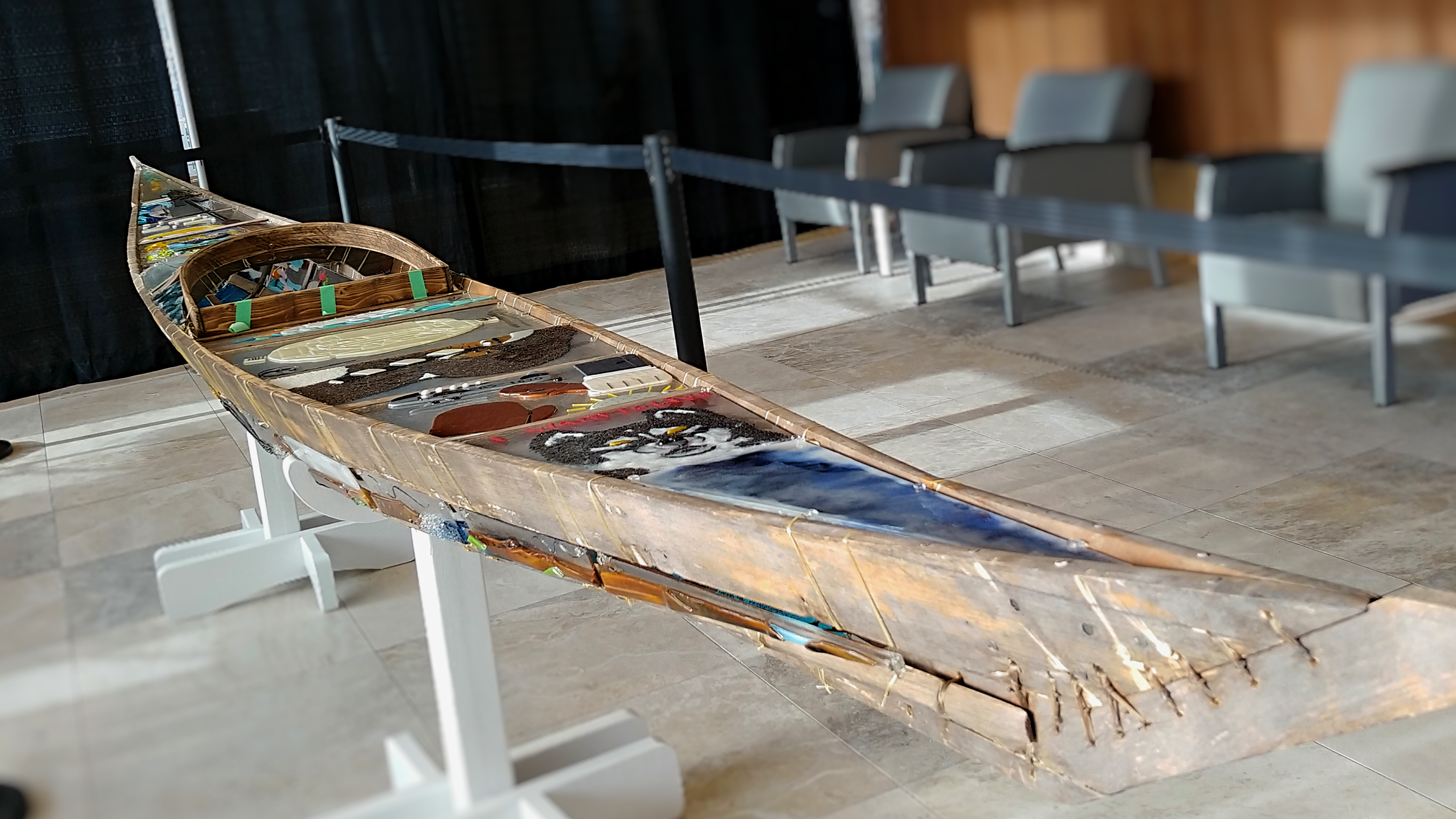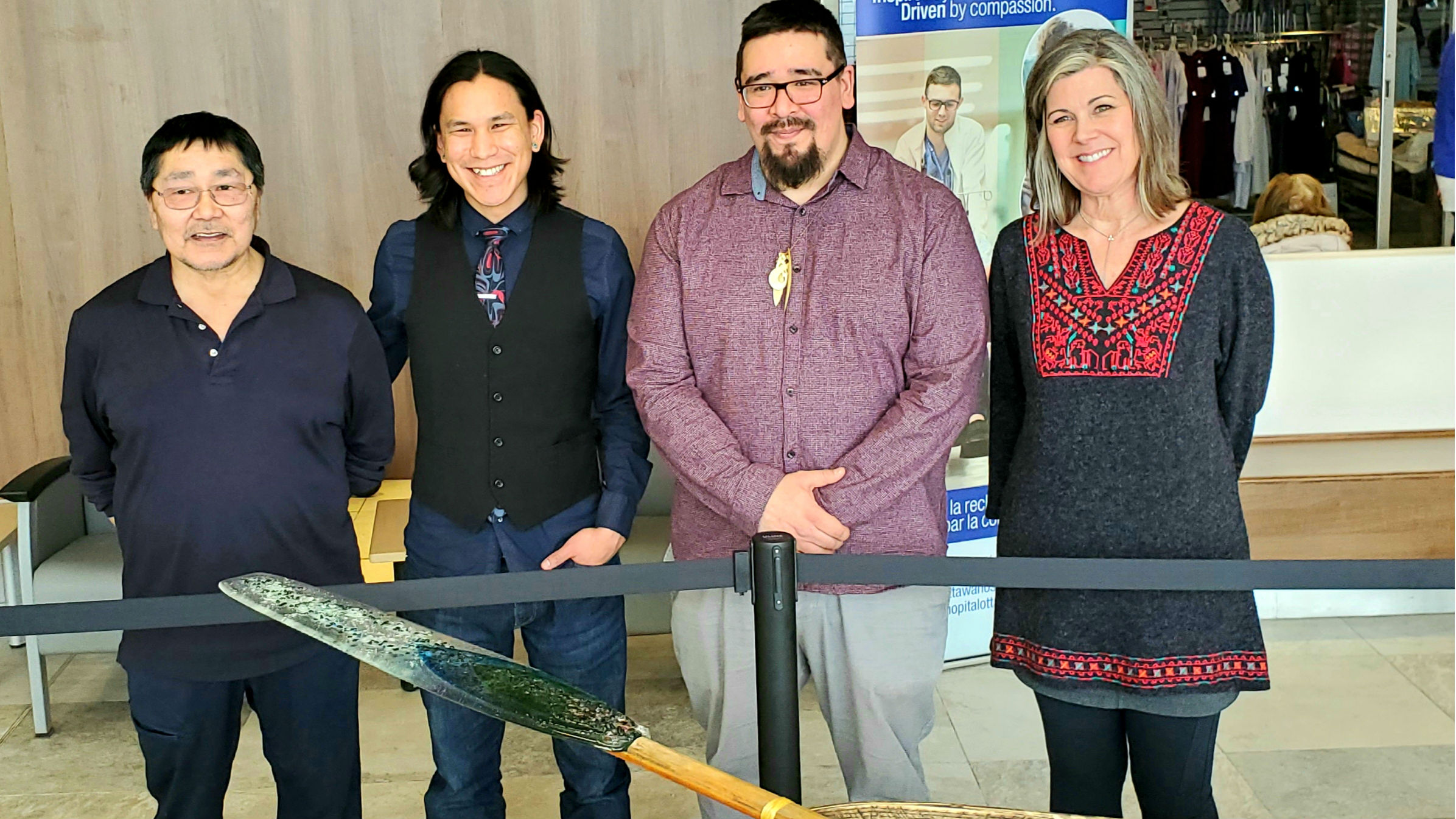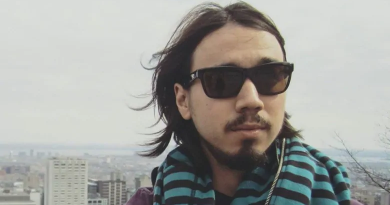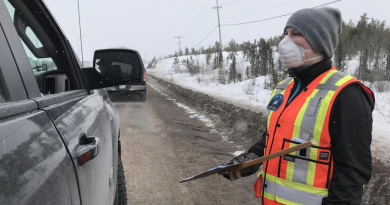Qajaq art installation at Ottawa Hospital “in light of reconciliation for Inuit” says artist

A unique qajaq art installation was unveiled at an Ottawa hospital on Thursday, a project artists involved say is an important representation of Inuit history and culture.
“This project is a chance for Inuk artists to contribute an art piece in light of reconciliation for Inuit,” said Kaajuk Kablalik, one of the contributing artists, in a news release.
“I feel this will be an on-going effort to educate about some of the occurrences of our rich history. I am very proud to be a part of this project because my people are one of my great passions,” Kablalik, also the president of Tungasuvvingat Inuit, the counselling and resource centre for Inuit in Ottawa, Canada, that partnered with Arts Network Ottawa’s Neighbourhood Arts Ottawa, to realize the project.
The project, named Sivuniksattinu “For Our Future.” is a 17-foot long qajaq covered with kiln-formed glass panels depicting different Inuit stories. It’s now installed at The Ottawa Hospital,
General Campus.

Three Inuit artists contributing the artwork: Kaajuk Kablalik, Melissa Attagutsiak and Alexander Angnaluak, and the project was overseen by Ottawa artist Jennifer Anne Kelly. Elder David Erkloo is also credited as providing wisdom and leadership for the project.
“A variety of techniques were used and the narrative is conveyed through each colourful glass panel with a message that is optimistic as we move forward with greater knowledge of our shared history,” Kelly said.
Guided by the recommendations of the Truth and Reconciliation Commission
In Canada, Ottawa has the largest Inuit population outside of the North. The most recent Canadian census puts the number at 1,280.
Katherine Cotton, chair of the board of governors of The Ottawa Hospital, said the art piece would be an important symbol to Inuit patients and their families.
“In the tradition of Inuit, this art installation brings the horizon into view and represents the health-care journey that so many take from near and far,” she said.
“The hospital is guided by the recommendations of the Truth and Reconciliation Commission and our vision of treating each patient as we would a loved one. Our sincere thanks to the artists for this creation and to Inuk Elder Erkloo for his leadership.”
Write to Eilís Quinn at eilis.quinn(at)cbc.ca
Related stories from around the North:
Canada: Canadian exhibition showcases cutting-edge Indigenous art from around the globe, including Arctic, Eye on the Arctic
Finland: Sámi-themed Finnish short film makes Sundance lineup, Yle News
Greenland: `Enough of this postcolonial sh#%’ – An interview with Greenlandic author Niviaq Korneliussen, Eye on the Arctic
Iceland: Icelandic artist Olafur Eliasson lights up London’s Tate Modern, Blog by Mia bennett
Norway: Walt Disney Animation Studios to release Saami-language version of “Frozen 2”, Eye on the Arctic
Russia: Russia’s Arctic culture heritage sites get protection, The Independent Barents Observer
Sweden: Sweden, Norway team up to preserve ancient rock carvings, Radio Sweden
United States: Set of Indigenous Yup’ik masks reunited in Alaska after more than a century, CBC News



